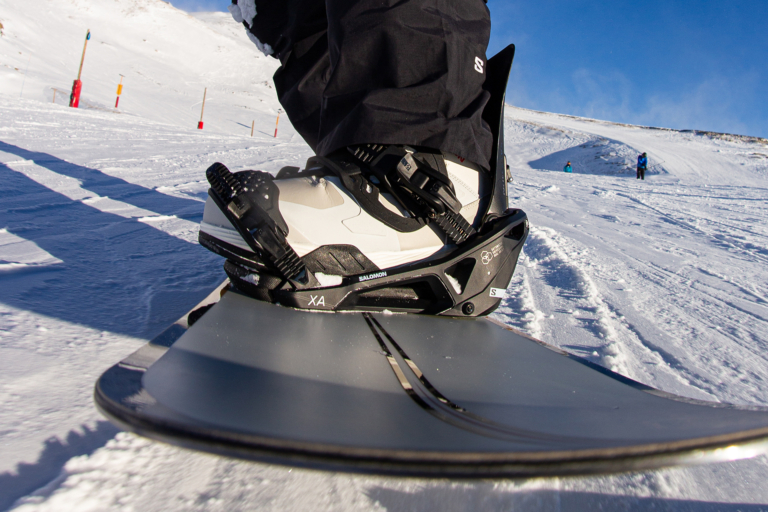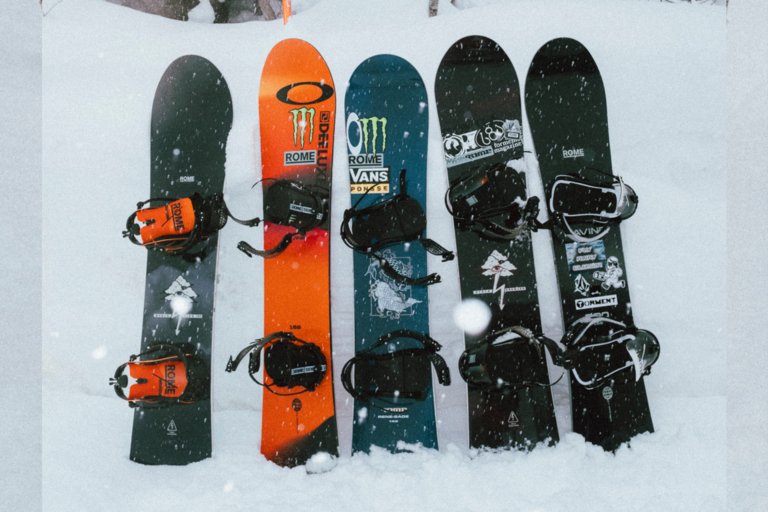
We ride all manner of boards here, and it’s not uncommon that we cross paths with some sort of technology, and wonder what would it be like if we could try this exact same thing, but without the technology? This thought has crossed our minds with various board cambers, binding straps, lacing systems, and the list goes on…
We recently tried out a board with Gilson’s 3D base. Unique technology, unique feeling. However, was it the 3D technology, or the board itself? Luckily, Gilson makes this same board; the Undead, also flat-based. Ah-ha! Our curiosity then led us to get our hands on a pair of Undeads–one flat-based, another 3D-based.
First things first…we had to establish a baseline, with the “normal” board. The flat-based version had the character of your average reverse camber between the feet, positive camber underfoot-type board. Nimble, pressy, poppy. The standard Undead is what I’d consider soft-mid flex tip to tail, and torsionally matched. Very approachable and fun.

After a few laps all over the mountain on the “standard” version, it was time to take the 3D offering for a spin. Throughout my snowboarding career, I’ve ridden several hundred boards, I’d say, several of which have implemented a different approach to the way a snowboard could be made. From the very first Bataleons, to Lib Tech’s first Magne-Traction board, to the Skate Banana, to K2’s ultra-reverse-camber Gyrator, to KORUA’s full-reverse, concave 129CM Pocket Rocket, to Nitro’s 2005 beveled-edge T-0. That last one, is what I had expected Gilson’s Undead with the 3D base to feel most similar to.

The only difference between the standard- and Gilson’s 3D base is that the wood core gets an extra pass with a router bit which removes about 1.5mm of material from the outer half inch perimeter of the board. This, in turn, means that the board’s edge and base exist 1.5mm above the plane of the rest of the base. The result, on said surface, is a feeling that is catch-free during those vulnerable moments that claim so many beginners’ wrists while connecting turns. As an experienced rider, I was feeling just a slight delay in edge engagement while skidding turns, but everything felt business as usual during quick edge transitions while carving. The transfer from edge to edge actually felt more seamless on the 3D base, as it would easily rock through the transition due to the flat zone across the board’s base being a total of one inch narrower. Also, I did notice a cleaner feeling edge hold on the 3D version while carving high on edge.
Boardslides took a moment to adjust to. Even flat-based on a “normal” snowboard, you feel your edges against the rail’s steel. The 3D base did not have that feedback, which many could argue is ultimately a good thing, because edge hang-ups are less likely, but that sensation, both through my feet, and via audio feedback were absent. Again, not a bad thing, just different. On rails, Gilson’s 3D base is actually butter smooth.
Speaking of butter…this 3D configuration is supposed to excel at buttering. Ultimately, in my opinion, butters don’t hold a lot of weight in deciding the qualities of a snowboard, but they are fun, are indicative of how a board will engage and release on edge, and at times, get you out of trouble. With Gilson’s 3D Undead, straight out of the wrapper, butters were anything but easy on “average” snow–machine-groomed packed powder. The 3D board has a DEEP stone-ground finish to its’ base. The structure is a thing of beauty. However, combined with the 3D base, it is reluctant to turn, especially on a softer surface (not talking powder, but chalky groomers). All of that linear structure, combined with the 3D base, which ultimately turns into a keel, loves to go straight.

So, we gave it a thorough hot wax, concealing the structure from the stone grinding. This made a massive difference, and in doing so, the 3D Undead felt much more under control, and similar to its flat-based counterpart.
Now, back to that buttering. Pre-waxing, the 3D board resisted side-slipping, and was reluctant to butter, but post-waxing, what I’d consider proper buttering antics were now much easier to maneuver around, and alas, catch-free.
So…things to consider, given our test vs. control test ride here. Despite what people assume, these 3D bases ARE NOT impossible to wax. The process of standard hot wax in your basement with mom’s iron and a scraper was hardly different than with any flat-based board. No biggie. Wax, however, is something that makes all the difference in experience here, and honestly, is something that every board really needs to unlock its true character.








